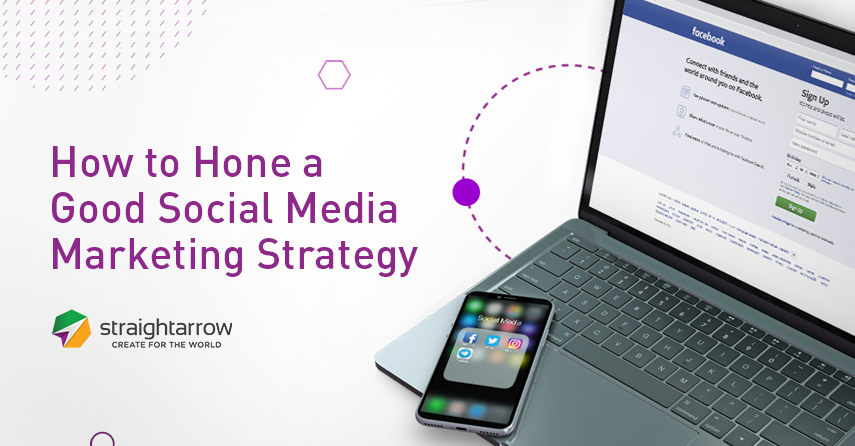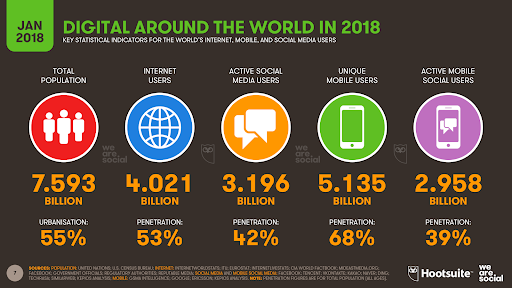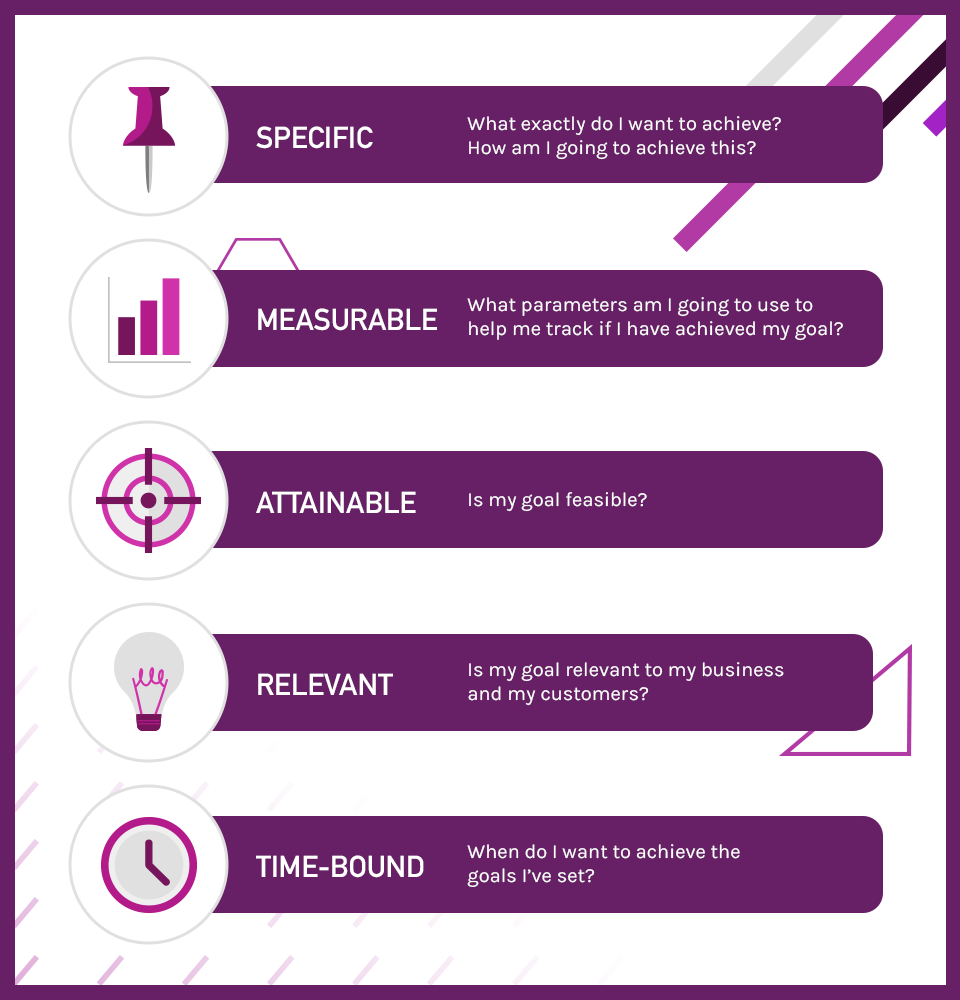How to Hone a Good Social Media Marketing Strategy

Everywhere you go, in each corner and with every turn you make, people stay connected online. They might be messaging friends, checking the news, or updating themselves on the latest news and trends through social media.
According to We Are Social’s annual Global Digital Report, there has been a 13% increase in social media users worldwide—adding to the already existing 3.1 billion users.

Unsurprisingly, almost all kinds of businesses now consider social media a go-to marketing platform. Baby boomers, millennials, and Gen Z can all be found on social media platforms. Even older generations are trying to get themselves familiar with this.
Facebook is still heavily populated by all generations, but Baby boomers can also be found on LinkedIn, perhaps because it is best for social selling. Millennials are on Twitter, while Gen Z is into image-led platforms like Snapchat and Instagram.
To put things simply: your target audience can most likely be found on one of the many platforms available. In most cases, social media is the easiest and the most cost-friendly platform to pitch a product or service.
This makes it easier to reach your target audience ultimately.
You might ask: How can my business stand out in a competitive scene?
The answer is a refined social media marketing strategy to help ensure success in your marketing efforts. However, the strategy doesn't just involve planning marketing efforts through social media but also understanding which platform works best to achieve your business goals.
Here are a few factors to consider when creating a social media strategy that works best for your business:
Determine your business goals and create social media marketing goals that are aligned with these.
Defining your business goals can help decide how and where social media can participate in your marketing efforts.
Setting primary and secondary goals will prevent your company from getting side-tracked.
Here are some of the most common social media goals:
-
Increase Brand Awareness: Posting meaningful social media content improves your social media presence and showcases your brand’s personality.
-
Drive Website Traffic: Boost traffic to your website by sharing and distributing exciting and relevant content from your site to your social media platforms.
-
Increase in Sales: Once brand awareness has been established, current and potential customers will most likely visit your social media accounts and invest in the offered products and services.
-
Improve Return-on-Investments (ROI): Conduct a thorough audit of your social media channels to review your spending and check if you received the projected ROI.
-
Drive In-store Sales: Sales and promos are best promoted through social media as both your target market and indirect, but interested customers are there.
Set your marketing objectives.
Goals are more achievable when there’s a set of parameters that define when and how these are achieved.
Your goals must be SMART—Specific, Measurable, Attainable, Relevant, and Time-bound.
What do we mean when we say Specific?
Write down specific goals that can help you identify what to achieve and how to achieve them.
How about Measurable?
Set parameters such as reach, clicks, engagement, hashtag performance, sentiments, organic, and paid likes to measure your success.
What does Attainable mean?
Be sure the goals you’ve set are feasible.
Make it Relevant.
Remember that your social media goal should be closely aligned with your business goals.
To help you be Time-Bound.
Create a time frame for when each goal should be achieved.
Use analytics and tracking tools to record the changes and improvements in your social media strategy. And don’t forget to revisit your goals to check your progress and determine if you’re still on track.
Conduct a social media audit to find the best social media platform for your business
You probably think posting across all platforms is the best way to get your brand presence and message across. That is until you realize that it won’t always work. This is when you conduct a social media audit.
An audit is a thorough review of what’s working and failing in your social media profiles.
f you don’t have an existing social media account, it is best to know where your company lies in the industry.
1. Locate all your social media accounts
Having an account on all social media platforms is nothing if you fail to post or update it consistently.
Locate all your existing accounts and check if having accounts on all of these platforms is necessary. Delete or revamp accounts as needed
2. Review each social media profile and make sure that they are optimized
Once you’ve finalized which platforms to use, ensure your profile is optimized. This helps your business page look more authentic.
3. Identify the low and high points of these accounts
Examine the quality of content posted on each of your social media platforms.
Ask yourself the following:
- Which type of post works best for my business?
- Are my tone and voice appealing enough?
- Am I delivering my message across?
- Which part of my post did not work? And what are my areas of improvement?
Checking the latest trends and industry updates can help you identify the strategy to get your message across and increase your posts' engagement.
4. Check your branding
Consistency is key. Do you have a unified tone and voice for your social media accounts?
Identify if your brand wants to be conversational, informative, or comedic in both posts and interactions with the customers.
A distinct tone and voice make sets you apart from your competitors. Think of it as having a social media identity that is recognizable not only by your customers but also by the prospect's target audience.
It is worth noting that your brand must have a consistent voice and a tone that differs from each post.
5. Analyze your audience
No matter how engaging your posts are, if you’re targeting the wrong audience, there’s a possibility that you will get low results.
Creating a set of buyer personas can help target the right people with the right messages through the right social media platform.
6. Go over past goals and see if these have been met
Goals change depending on the demands of your business. It is essential to know if you’ve met these goals to be able to move forward freely to the next one.
Here’s a checklist you can use when conducting a social media audit. You could always have experts conduct assessments for your social media accounts when in doubt.
Identify your audience
I mentioned earlier that you should know which social media platform shows the most engagement between your audience and your brand.
Facebook may be the most populated social media platform in most parts of the world, with 2.2 billion monthly active users (Social Media Universe 2018), but this does not mean that it is the best platform for your social media strategies.
Capitalize on the platform where your audience will most likely interact with your brand.
Here are a couple of brands that have identified their audience and used a tone and voice that is relatable to that audience.
-
Disney’s Facebook Account (@Disney)
You can find anything and everything about Disney on their Facebook profile. From trailers to throwbacks, snippets from movies and shows, and even features on the actors and actresses behind our beloved Disney films.
Disney’s Facebook serves as a way for their fanbase to interact with their favorite shows and characters.
.png?width=497&name=unnamed%20(1).png)
Image source: Disney’s Facebook Account
Takeaway:
- You should find a way to tell your brand's most relatable story to your audience.
- Use the appropriate content or feature people your brand has positively impacted.
2. Vans’ Instagram Account (@vans)
As the maker of classic checkered shoes, Vans took its Instagram profile to the next level. The posts are aesthetically pleasing, whether through stand-alone product shots or photos with models.
They know their market and target them well, based on the number of skateboard and biking-related photos on their Instagram account.

Image source: Vans’ Instagram Account
Takeaway:
They don’t only focus on selling their brand. They see to it that people watch and anticipate their every post.
Vans also collaborates with brands and create videos that target their customers and fans of the other featured product.
3. Wendy’s Twitter Account (@Wendys)
Wendy’s shade game cannot be stopped. Typically, a business would shy away from comments with negative remarks.
But Wendy’s saw this as an opportunity to make their customer relations hilarious and entertaining.


Image source: Wendy’s Twitter Account
Takeaway:
Don’t be afraid to be different. You wouldn’t usually go for the tone and voice that Wendy’s is using, but it worked for them.
Know the competition
Researching about the competition doesn’t mean that you are out to copy their success stories. But knowing what works for your audience will help you pitch your product or service with a better and more creative approach.
Research is also a great way to leverage areas of opportunity and to learn from what your competitor has tried.
Create a content strategy and content calendar
Great content is what makes a successful social media content strategy. This can convert reach to prospects and even actual paying customers when done correctly.
Make sure to create the content that fits your brand.
These three things should be at the top of your priority in terms of content:
-
Quality of content
The quality and variety of the content you feed your audience are essential. These are your make-or-break points. Make sure to utilize most, if not all, social media content to identify the ones that work best for your brand entirely.
Some of the content you can include in your post to make it more likable for the audience include:
- Pure text
- Images
- Memes
- GIFs
- Videos
- Giveaways and contests.
Other ways are questionnaires, polls, quizzes, podcasts, user-generated content, e-books, infographics, and interviews.
2. Time of posting
Check the progress of your posts. When is your audience most likely to engage with your content? Once you’ve set the time, adjust your postings to have better results.
3. The frequency of posting
How often do you post on social media? Is it too often that it comes off as if you bombarding your audiences with too much information? Or do you hardly post so that they would sometimes forget that your brand is there?
Find the perfect number of posts to keep your audience waiting for your next update.
A Content Calendar is where you plot the specific contents you’ve come up with. This makes it easier to track the posts and examine which worked and which didn’t.
Consistently engage with your audience.
Don’t put your marketing efforts to waste.
ENGAGE with your audience.
At the end of the day, we all want to create a network/community that loves and uplifts your brand.
Respond promptly to audience queries through private messages or the comments section.
When you engage, remember that these customers are what makes your brand. Love them, and they will surely cherish you right back.
Revise and try until you get the best results
Make a conscious effort to check the progress regularly of your social media strategy and improve from there. Failing at one point doesn’t mean the entire project failed; revise and try to use other approaches or techniques until you get the right mix that works for your brand.
Takeaway
Knowing that a specific goal can be practical on one social media platform but fail on others is essential. This is why thoroughly planning a social media strategy should be a priority. It can benefit your business successfully if you understand your brand's good and most effective platform.
That said, it is never wrong to ask for professional help. StraightArrow’s social media team is always available to help you in your social media marketing efforts.





![10 Tips on How to do Business Communications through Social Media [INFOGRAPHIC]](http://www.straightarrow.com.ph/wp-content/uploads/2013/06/infographics_1-736x1024.jpg)
![7 Reasons Why You Need Social Media for Your Business [UPDATED]](https://www.straightarrow.com.ph/hubfs/7Reasons-NewBlogHeader2.png)


Comments